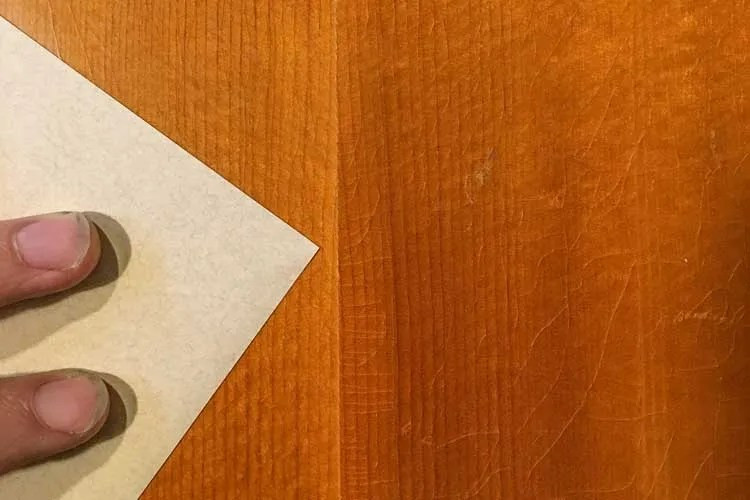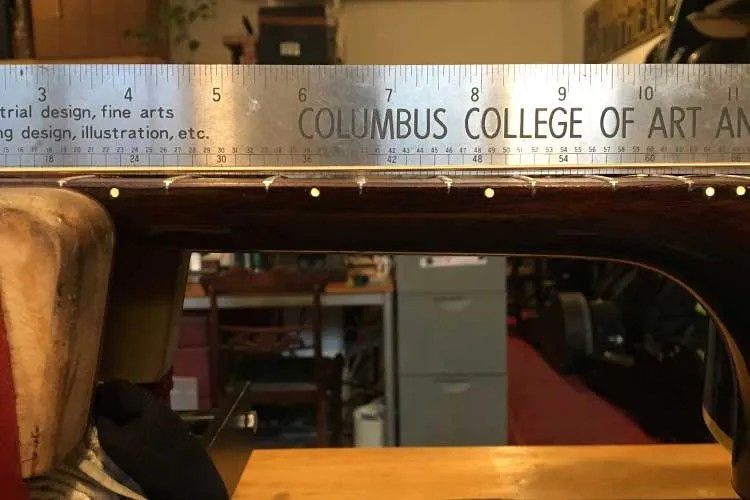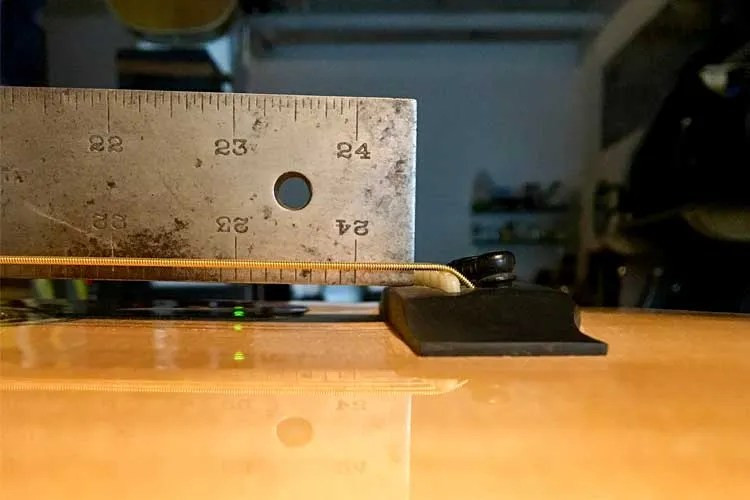Shopping for a guitar can be exciting, and considering used guitars opens up a world of possibilities. Whether you’re seeking exceptional value or the unique charm of a vintage instrument, the used guitar market offers something for every player. Buying used allows you to get more for your money and sometimes acquire instruments with a character that newer guitars simply can’t replicate. However, navigating the world of used guitars requires knowledge and careful consideration.
This guide provides a detailed perspective on choosing the right used guitar, covering where to find them, what to look for, and how to ensure you’re making a sound investment. We’ll explore the crucial aspects of inspecting a used guitar, from its overall condition to potential repairs, ensuring you feel confident in your purchase.
Part One: Identifying Your Ideal Used Guitar and Where to Find It
Before diving into the market, it’s essential to define what you’re looking for in a used guitar. Are you a beginner needing a playable instrument, or are you chasing a specific vintage model like a banner-era 1940s Gibson J-45? Start by envisioning your dream used guitar and then explore as many instruments as possible. This hands-on experience will help you understand what feels right in your hands and sounds pleasing to your ears, while also giving you a realistic idea of pricing. Don’t rush this process; the more you explore, the better you’ll understand the market and refine your preferences.
When searching for used guitars, you have several avenues:
- Vintage Guitar Dealers: These dealers specialize in used and vintage instruments. While prices might be higher due to their expertise and overhead, they often offer guitars that have been inspected and, if necessary, repaired. This can provide a level of assurance, especially for less experienced buyers.
- Private Sales: Buying directly from individuals can sometimes yield the best deals. However, it requires more due diligence on your part to assess the guitar’s condition and history. Be sure to ask questions about why the Guitar Used to belong to the seller is being sold and any known issues.
- Online Marketplaces: Platforms like eBay and Reverb offer a vast selection of used guitars. While convenient, buying online requires extra caution. Prioritize sellers with excellent communication and clear return policies in case the used guitar isn’t as described or doesn’t meet your expectations.
Regardless of where you shop, physically handling and playing the used guitar is always the best approach. This allows you to assess its playability, sound, and overall condition firsthand. Remember that even guitars of the same model and year can vary in feel and tone. For example, two 1965 Martin D-18s will each have their unique character.
While the internet is a fantastic resource, don’t expect to find unbelievable “once-in-a-lifetime” deals easily. The internet has made pricing information readily available, so most sellers are aware of the fair market value for their instruments. Budget for a reasonable price for the used guitar you’re interested in, and factor in potential repair costs.
Part Two: Inspecting a Used Guitar for Potential Repairs
It’s realistic to anticipate that a used guitar, especially a vintage one, might require some level of repair. Incorporate this into your budget. At a minimum, most older guitars used will benefit from a professional setup, including truss rod adjustment and saddle/nut adjustments, which can cost around $65 or more. More extensive repairs like crack fixes, neck resets, or refrets are also common.
Shopping at a vintage dealer can be advantageous because they often have in-house repair services. While you might pay a premium, you’re also paying for their expertise in sourcing, evaluating, and potentially restoring used guitars. A reputable dealer should be transparent about any known issues or work done on a guitar used in their inventory. Trust your instincts when dealing with a dealer – good communication and a sense of trustworthiness are crucial.
Visiting both vintage dealers and local music stores is highly recommended, even if you plan to buy online. Talking to experienced guitar professionals provides invaluable insights. For example, if you’re seeking a small-bodied mahogany Martin 00-15 but find it unaffordable, a knowledgeable dealer might suggest excellent alternatives like a Guild M-20, famously played by Nick Drake.
Once you’ve narrowed down your choices and are ready to seriously consider a used guitar, the next step is a thorough inspection. Remember, a basic setup is almost always needed and should be factored into your initial cost. Repair costs mentioned below are estimates and can vary based on location and technician expertise. Don’t prioritize the cheapest repair quote; quality work is essential, especially for vintage instruments.
Start with a…
 AG302_expert_1
AG302_expert_1
A lower-bout seam separation, neatly repaired as shown, is generally not a major concern.
Visual Inspection
Hold the used guitar and carefully examine the top, back, and sides. The finish can reveal a lot about its history, indicating potential moisture damage or impacts. Check for consistent finish appearance and note any dings or flaking areas.
Look for significant cracks or seam separations in the body. Hairline cracks, especially if the exposed wood isn’t darkened and the edges aren’t warped (indicating long-term neglect), are not always deal-breakers. Neatly repaired seams or cracks are also generally acceptable. However, open seams or cracks requiring repair will add $50–$150 to your potential repair bill.
Examine the bridge closely. Ensure it’s firmly glued to the top. Try sliding a piece of paper under the edges. If it slides under any part of the bridge, it needs to be removed and reglued—a critical repair that shouldn’t be delayed. A loose bridge impacts sound and stresses the top. Budget $150–$300 for this repair.
Inspect the neck joint. Look for any irregularities, finish chipping, or discoloration at the heel’s base. This might indicate a previous neck reset, which, if well-done, isn’t necessarily negative. Many vintage Martins will require neck resets over time.
 AG302_expert_3
AG302_expert_3
Using a straightedge can help assess neck straightness.
Neck Check
The neck’s condition is vital to a used guitar’s health. A slight neck relief is normal, but excessive relief, twists, or unevenness can be problematic.
For a quick check, hold the used guitar with the body facing you and the neck pointing towards you. Close one eye and sight along both sides of the neck. This helps identify major dips, humps, or bends.
For a more precise assessment, use an 18-inch straightedge. Lay it along the frets while the guitar is tuned to pitch. This reveals the neck relief. Ideally, you should be able to slide a 0.010-inch feeler gauge under the string at the 8th fret. Your luthier can fine-tune this during a setup.
Playability Test
If the visual and neck checks are satisfactory, play the used guitar extensively. Bring your preferred pick, capo, and consider having a friend listen from a distance. Play various styles and assess how the guitar used performs across the fretboard. This is the time to evaluate neck feel and fret condition. Minor fret issues like a few high or low frets can often be addressed with a fret dress ($50-$150). However, severely worn frets might require a refret, which is more costly ($250-$600, especially for bound fingerboards or brittle woods like maple or ebony).
Part Three: Deeper Inspection – Inside the Guitar and Neck Angle
To thoroughly evaluate a used guitar, go beyond the surface. Peeking inside the body and assessing the neck angle can reveal crucial information about its structural integrity and potential future needs. Bring a mirror and flashlight for internal inspection – it’s like checking under the hood of a car.
 AG303_expert4
AG303_expert4
Worn holes and cracks on a bridge plate indicate it may need replacement.
Bridge Plates
Inspecting the bridge plate is a key internal check. This piece of wood (often maple) reinforces the top and significantly impacts sound and structural stability.
Look for clean, circular string ball-end holes in the bridge plate. Ragged or worn holes, or gouged wood between them, indicate wear, potentially due to softer wood or heavy use. In severe cases, bridge plates can crack, especially if a loose bridge is left unglued. Repair or replacement costs range from $75 to $400 due to the complex removal process.
Also, examine the interior for cracks and cleats (thin wood patches used for crack repair). A few cleats and well-repaired cracks or seams aren’t necessarily detrimental and often don’t affect the sound. The neatness of cleating can indicate the quality of previous repair work.
 AG303_expert3
AG303_expert3
Bad neck angle (left) vs. good neck angle (right).
Neck Angle
Neck angle is crucial for playability and sound. Over time, string tension can cause the neck angle to shift, increasing string action. Signs of neck angle issues include a very low saddle or a bridge that appears to have been shaved down to lower action – often a sign someone tried to avoid a neck reset. This compromises sound quality and top vibration.
A quick neck angle check (for straight necks and full-height bridges): Place an 18-inch straightedge along the fretboard, extending towards the bridge. Ideally, it should just touch the top of the bridge. If it dips significantly towards the guitar top, the neck angle is likely too shallow, suggesting a potential need for a neck reset.
Neck resets, while major repairs ($350-$1,000, potentially including a refret), are common for many great used guitars, especially vintage Martins. Don’t be alarmed by the possibility, but factor it into your budget and negotiation.
Despite potential repairs, buying used guitars often provides greater value and access to unique instruments with character. This guide aims to equip you with the knowledge to confidently navigate the used guitar market and find the perfect instrument to inspire your musical journey.
